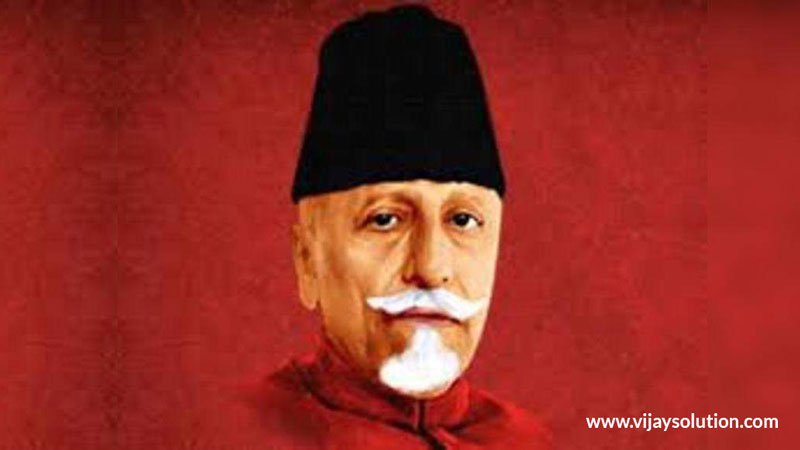First Education Minister of India: The Minister of Education of India, earlier known as the Minister of Human Resources Development 1985 to 2020. The Education Minister is the head of India’s Ministry of Education and a cabinet minister. Ramesh Pokhriyal, who resigned on July 7, 2021, claiming health reasons, was India’s most recent education minister.
- the first education minister of India -Maulana Abdul Kalam Azad
- First Education Minister of India- career
- Freedom India
- The first education minister of India – Early life
- First Education Minister’s Education and influences
- The early journalistic career of the First Education Minister of India
- Struggle for Indian freedom campaign
- Al-Hilal and Khilafat movement
- Non-co-operation Movement
- Congress leader
- Works of literature
the first education minister of India -Maulana Abdul Kalam Azad
Maulana Sayyid Ab Ghulam Muhiyuddin Ahmed bin Khairuddin Al-Hussaini Azad was a senior leader of the Indian National Congress . Azad was an Indian freedom fighter, Islamic scholar, and writer. Maulana was designated as India’s First Education Minister after Independence. Most people remember, Azad with his nickname Maulana.
Maulana is an honorific that denotes ‘Our Master,’ so he used the nickname Azad (Free). Due to his contribution to the development of India’s education, recognized by the nation’s celebrations of his birthday as National Education Day.
First Education Minister of India- career
Azad wrote much poetry in Urdu as well as religious and philosophical treatises at a young age. He became famous as a journalist, writing works critical of the British Raj and campaigning for Indian nationalist parties. Azad gained fame as the commander of the Khilafat Movement, at which moment he met Indian leader Mahatma Gandhi.
Maulana became a major supporter of Gandhi’s nonviolent civil disobedience principles. It helped to organize the non-cooperation efforts to respond to the Rowlatt Acts of 1919. Azad focused on Gandhi’s ideas, which included promoting Swadeshi (indigenous) products and the cause of Swaraj (Indian self-rule). He became the youngest President of the Indian National Congress in 1923 when he was 35 years old.

Azad was elected to the foundation committee for Jamia Millia Islamia in Aligarh, Uttar Pradesh, in October 1920 besides lac the help of the British colonial government. In 1934, he helped to push the university’s campus from Aligarh to New Delhi. He was honored by the university’s main gate number 7 just on the main campus.
Freedom India
Azad was against the Dharasana Satyagraha in 1931 hence he quickly came to fame as one of India’s most powerful national leaders promoting Hindu–Muslim unity. He was the president of Congress from 1940 to 1945. The Quit India movement launched that duration. Azad was imprisoned along with the entire Congress leadership. Through the Al-Hilal newspaper, he also pushed for Hindu–Muslim peace.
The first education minister of India – Early life
Azad was born in Mecca which is now part of Saudi Arabia, on November 11, 1888. Sayyid Ghulam Muhiyuddin Ahmed bin Khairuddin Al Hussaini was his real name, but he was popularly known as Maulana Abul Kalam Azad. Azad’s father was an Afghan-born Muslim scholar who resided in Delhi with his maternal grandfather when his father died while he was a child.
He fled India during the 1857 Indian Rebellion and resided in Mecca. His father, Muhammad Khairuddin bin Ahmed Al Hussaini, wrote twelve books, had thousands of disciples, and claimed noble ancestry, while his mother, Sheikha Alia bint Mohammad, was the daughter of Sheikh Mohammad bin Zaher AlWatri, a renowned Medina scholar with a reputation that extended beyond Arabia.
In 1890, Azad and his family moved to Calcutta.
Also Read… SBI Mutual Fund Me Paisa Kaise Lagaye in Hindi
First Education Minister’s Education and influences
Azad earns his early education at home. After learning Arabic as a first language, Azad continued on to Bengali, Hindustani, Persian, and English. The teacher hired by Azad’s family educated him in Maliki, Mazahibs of Hanafi, Shariat, mathematics, philosophy, world history, and science subjects.
At the age of twelve, he wanted to write about Life. Ghazali at fourteen, was contributing learned articles to Makhzan. at fifteen, he was teaching a class of students, most of whom were twice his age. and at sixteen, he completed the traditional course of study, nine years ahead of his contemporaries, and published a magazine. He married Zulaikha Begum, a young Muslim girl when he was thirteen years old. Azad wrote treatises interpreting the Quran, Hadis, and Fiqh, and Kalam ideas.
Also Read… Education Minister of Karnataka and education
The early journalistic career of the First Education Minister of India
Azad began his career as a reporter as an early child. He was just 11 years old, when he started publishing the poetical newspaper Nairang-e-Aalam. so by 1900, he was already an editor of the weekly Al-Misbah. Makhzan, Ahsanul Akhbar, and Khadang e Nazar are among the Urdu magazines and publications to which he contributed articles.
He started publishing Lissan-us-Sidq, a monthly journal, in 1903. It was published from December 1903 to May 1905 and was later forced to close due to the lack of money. On Shibli Nomani’s invitation, he joined Al Nadwa, the Nadwatu l-Islamic Ulama’s doctrinal publication. From April to November 1906, he was the editor of Vakil, an Amritsar newspaper. He moved to Calcutta for a short time and was affiliated with Dar-ul-Saltunat. After a few months, he returned to Amritsar and resumed his job as editor of Vakil, where he remained until July 1908.
Struggle for Indian freedom campaign
In 1908, he went to Egypt, Syria, Turkey, and France. hence he met several revolutionaries, such as Kamal Mustafa Pasha’s followers, members of the Young Turk Movement, and Iranian revolutionaries. Azad developed political views that were radical for most Muslims at the time hence he ultimately became an active Indian nationalist. Against common Muslim opinion, Azad opposed Bengal’s partition in 1905. He was deeply involved in revolutionary operations after being introduced to them by famous Hindu revolutionaries Aurobindo Ghosh and Shyam Sundar Chakravarty.
Al-Hilal and Khilafat movement
In 1912, he started Al-Hilal, an Urdu weekly newspaper published in Calcutta, in which he publicly opposed British policies while also exploring the issues that ordinary people suffered. Azad’s publications supported Indian nationalist principles. That was intended to inspire young Muslims to struggle for independence and Hindu-Muslim harmony. With the beginning of World War I, the British increased censorship and political activity restrictions. As a result, the Press Act of 1914 restricted Azad’s Al-Hilal.
Azad published the Al-Balagh, which was restricted by the Defense of India Regulations Act in 1916 so he was arrested. The administrations of the Bombay Presidency, United Provinces, Punjab, and Delhi all forbade him from entering the provinces, thus Azad was moved to a Ranchi jail, where he stayed until January 1, 1920.
Also, read.. Study Chair for students and its advantage
Non-co-operation Movement
Azad was elected president of the All India Khilafat Committee after joining the Congress. After the arrest of Azad and other political leaders, the movement drew millions of people to peaceful processions, strikes, and protests.
Congress elected him the youngest president in 1923. Azad was the driving force behind Nagpur’s Flag Satyagraha. Maulana was the president of the 1924 Unity Conference in Delhi. He worked to bring the Swarajists and Khilafat leaders back together under the Congress banner. Azad traveled extensively throughout India following the movement, supporting Gandhi’s ideals, education, and social reform.
Congress leader
Azad came to popularity in politics as a motivating personality. Azad gained fame as a national leader, standing on the Congress Working Committee. During the Congress session in 1936, Azad started an argument with Sardar Vallabhbhai Patel, C. Rajagopalachari, and Dr Rajendra Prasad on the Congress’s position for socialism. Azad had backed Nehru’s election as Congress president and voted in support of a resolution supporting socialism. He united himself with Congress socialists including Nehru, Subhash Bose, and Jayaprakash Narayan in this way. Many conservative Congressmen opposed to Azad’s support for Nehru’s re-election in 1937. Between 1935 and 1937, Azad supported dialogue with Jinnah and the Muslim League over a Congress-League unity and then further political cooperation.
Study Table for Bed Side and its Qualities
Works of literature
Azad’s works include India Wins Freedom, Ghubar-e-Khatir, Tazkirah, and Tarjumanul Quran, among many others. Ghubar-e-Khatir is one of Azad’s most important books. Maulana wrote it during 1942 and 1946. British Raj imprisoned him during that time in Ahmednagar Fort in Maharashtra while in Bombay to preside over the All India Congress Working Committee meeting.

